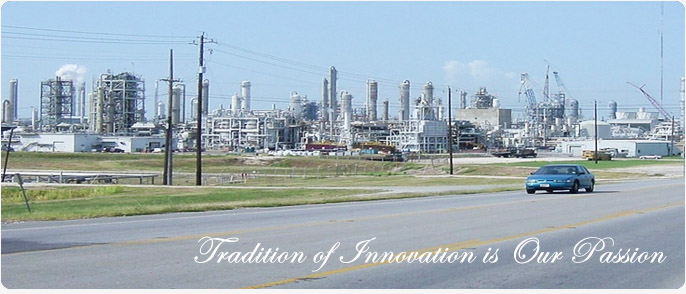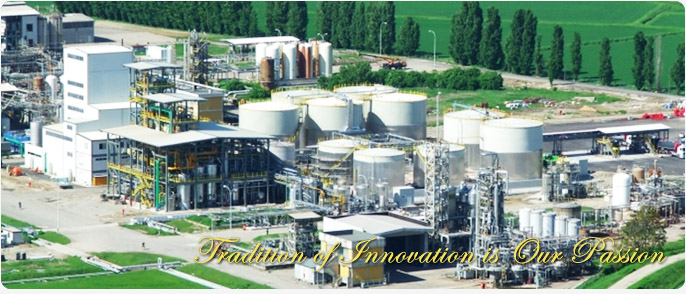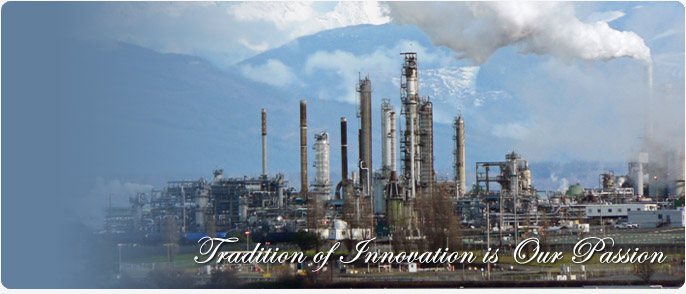








Innovation of analysis and synthesis methodologies for industrial system
5 January 2011
 Graphical Thermodynamics Analysis of Industrial System
Graphical Thermodynamics Analysis of Industrial System
Graphical technique is an excellent tool to analyze the thermodynamics for a industrial system. By using this technique, the engineers can quickly find the causes of thermodynamics inefficiency and inspect them to learn the important characteristics. Finally better design assistance for the process synthesis can be found.
a. Heat availability diagram
Umeda, Niida, and Shiroko (1979) have proposed the heat availability diagram, which plotting heat load Q on x-axis and Carnot efficiency 1-T0/T on y-axis, respectively. Since temperature of heat source greater than that of heat sink, the availability lines for heat sources appear above the lines for heat sinks. The enclosed area between the composite lines corresponds to the loss of availability in a distillation column. It is to be noted that the minimization of energy loss can be achieved by minimizing the area between the composite lines.
b. Pinch analysis
In the early 1980s, Prof. Bodo Linhoff and his co-workers have introduced Pinch Technology as tools to evaluate total system design (Linhoff,1984). This methodology, later was renamed as Pinch Analysis, using the Column Grand Composite Curve (CGCC), which constructs of the individual enthalpy deficits on x-axis and temperature on y-axis, to set targeting in distillation column (Dhole and Linnhoff, 1993). Recently the ordinate of CGCC is changed to Carnot efficiency instead of temperature and represents pinch and exergy information (Dhole and Zheng, 1995). The obtained graphics iscalled Exergy Grand Composite Curve and has a context more general system such as refrigeration system, close-cycle gas turbine system, etc. The area surrounded either represents energy and exergy loss.
Pinch Analysis, however, is simple and suggestive tool to analyze physical processes, but it does not offer information with respect to the chemical processes. In reactive distillation, for example, pinch analysis does not offer information that relates to the exergy consumption and loss caused by chemical reactions because this exergy is not only related to the temperature, but also to the concentration. Exergy loss caused by mixing, which is proportional to the concentration, also cannot be obtained by Pinch Analysis.
- Energy-utilization diagram (EUD)
In order to give more detailed information for not only physical processes but also chemical processes, Ishida et al., in 1983 have created EUD methodology. The basic concept of this methodology is the second law of thermodynamics that is related to the term of exergy. By using this methodology, various kind of exergy loss accompanied by processes such as condensation, evaporation, mixing, heating, cooling and so on can be dealt on a single graphic domain.
The energy transformation for a binary system takes place between two processes. One process donates energy and the other accepts energy. For the heat-exchange operation, for example, the high temperature stream is an energy donor, and the low temperature stream is an energy acceptor. Such phenomena may be drawn on the two-dimension diagram by using the enthalpy change of the process (DH) on the abscissa and the energy level A (A=1-T0 DS/DH) on the ordinate. This diagram is called EUD (Energy-Utilization Diagram). The closed area between energy donor and the acceptor is the exergy loss. There are some conditions which must be satisfied so that energy transformation may occur. It is the difference between the energy level for the donor and that for the acceptor, which corresponds to the driving force for the energy transformation. This difference should be always positive or zero. It is to be noted that this EUD can be extended to wide application for many industrial systems, because the definition of energy level can be applied to any kind of process concept. In distillation, for example, Taprap and Ishida (1996) have applied the concepts of both premixing model and individual energy level to classify the exergy loss in a distillation column into six kinds; losses due to heating and mixing in liquid phase, losses due to cooling and mixing in gas phase, and losses due to evaporation of light component and condensation of heavy component through phase changes. They present their characteristics on the EUD.
d. Integrated Energy-utilization diagram (IEUD)
The MUD methodology has explained nicely the feature of exergy losses on each plate in distillation column in detail. However, it cannot give integrated information for the whole column. Budiman and Ishida (J. Chem. Eng. Japan, 29, 4, 662-668, 1996) has developed three-dimensional graphic exergy analysis by representing the exergy loss as volume in three dimensions instead of area on the dimension, named as IEUD. This methodology reveal the transferred energy and the accompanied exergy loss of each sub-processes on each plate, as well as the distribution of those values over the whole column.
e. Material-utilization diagram (EUD)
 Budiman and Ishida (1996) have proposed three-dimensional domain of integrated energy-utilization diagram (IEUD) and applied it to disclose the features of a distillation column. The great advantage of this methodology is that various kinds of exergy losses accompanied by condensation, evaporation, mixing, heating and cooling can be dealt on a single diagram.From the energy-saving viewpoint, the IEUDs have proven to be very useful in disclosing the exergy characteristics in the wholecolumn. However, separation performance in a distillation column cannot be judged on IEUD. Then in 2004 (Energy-the International Journal, 29, 2213-2223) We develop another method based on the concentration viewpoint using a material-utilization diagram (MUD). By using this methodology, both the separation performance and the exergy loss can be displayed simultaneously.
Budiman and Ishida (1996) have proposed three-dimensional domain of integrated energy-utilization diagram (IEUD) and applied it to disclose the features of a distillation column. The great advantage of this methodology is that various kinds of exergy losses accompanied by condensation, evaporation, mixing, heating and cooling can be dealt on a single diagram.From the energy-saving viewpoint, the IEUDs have proven to be very useful in disclosing the exergy characteristics in the wholecolumn. However, separation performance in a distillation column cannot be judged on IEUD. Then in 2004 (Energy-the International Journal, 29, 2213-2223) We develop another method based on the concentration viewpoint using a material-utilization diagram (MUD). By using this methodology, both the separation performance and the exergy loss can be displayed simultaneously.





